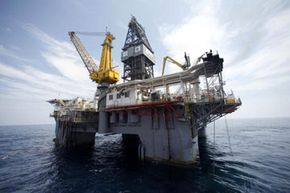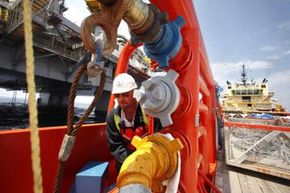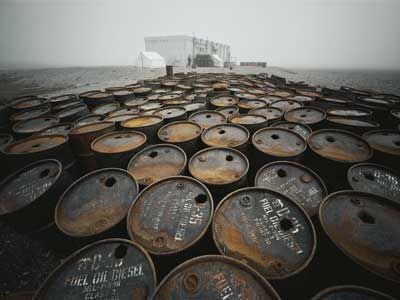Key Takeaways
- Relief wells are a method to control oil spills.
- Relief wells are drilled to intersect the leaking well and inject heavy drilling mud to stop the flow of oil.
- This technique has been effective in mitigating environmental damage caused by oil spills.
Ever wonder how old-timey oil wells you see on television had enough pressure to erupt geyser-style, spewing "black gold" hither and yon? Turns out this big screen wonder can happen in real life. Oil deposits are sealed under weighty layers of soil and rock, but when a drill breaks the seal, all that pressurized liquid needs somewhere to go. Usually, it flows up and out of a well in a controlled manner. That's because modern wells have blowout preventers -- a series of shut-off valves and a master kill-switch -- that usually limit such overflow eruptions [source: American Petroleum Institute]. But when something goes catastrophically wrong -- like the Transocean offshore oil rig, Deepwater Horizon, that exploded on April 20, 2010, killing 11 workers and sending oil flowing unchecked into the Gulf of Mexico -- a relief well may be the best option to bring it under control.
A relief well comes into play when a well goes wild, channeling more oil or natural gas than the well or its operators can handle. To tame the flow, a secondary well is dug at a safe distance from the original drilling site, tapping into the troubled piping and diverting the pressurized liquid [source: SWPLA]. However, in the case of the Deepwater Horizon incident, the relief well started May 2, 2010, was intended to plug the oil-gusher by pumping saltwater, mud and concrete into the far-underground pipe from which the blowing well is spewing oil. The effort is expected to clog the out-of-control well, but just in case the first relief well misses its mark, BP (the company that had hired the Deepwater Horizon to drill the main well) began drilling a second relief well May 16, 2010 [source: O'Hanlon]. Unfortunately, the odds of drilling into exactly the right spot are slim; it's like aiming for a dinner plate 3 miles (5 kilometers) below the sea's surface [source: Brown].
Advertisement
Other than the fact that relief wells generally are drilled to hit a precise target, there's not much difference between them and regular wells. Both are drilled vertically downward, but the relief well also angles to intersect with the original well; this is called directional drilling [source: Fountain].
Relief wells aren't just a "plan B" for oil or natural gas drilling. In areas with high water tables, relief wells are dug just as normal water wells would be, then used to periodically drain excess water. For example, a system of relief wells surrounding a levee can help stabilize the structure over the long-term by containing the water [source: Cashman].
But pre-emptive drilling for relief oil wells doesn't usually happen at the same time main wells are being constructed, even though it's the only method proven to stop a blowout if containment methods don't work [source: Drash]. In fact, in the United States, relief wells aren't mandated [source: Bluestein and Drearen]. Unfortunately, as we'll see on the next page, drilling a relief well after the fact is like calling 911 to report a house fire and learning the fire engine needs to be constructed before it can race over to douse the flames.
Advertisement


